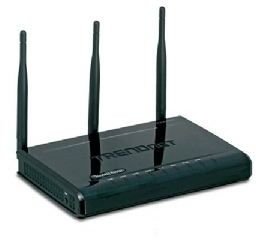The Benefits of Wireless n 802.11 Wi-Fi
Wireless networks are popping up all over from free public urban hot zones to private Wi-Fi networks in homes and home offices. The 802.11b/g Wi-Fi standard is the most popular wireless technology employed in these wireless networks.
Unfortunately, 802.11b/g does suffer from several limitations such as perceived slow transfer rates as the number and size of downloads increases on these networks and limited range capabilities forcing users to be fairly close to the access point to receive any wireless Internet service at all. The new wireless n standard promises to solve some of these problems and make Wi-Fi Internet access faster, more accessible, and more convenient.
In this two-part series, we’ll examine the benefits of the wireless n standard including speed and range improvement. In addition, we’ll take a look at whether wireless n is backward compatible with previous standards such as 802.11b/g.
How is Wireless n Different?
The 802.11n standard is really just an evolution of 802.11b/g standards that pushes the performance of Wi-Fi networks to a higher level. The most important change is introduction of Multiple Input Multiple Output (MIMO). MIMO uses several antennas to both send and receive data increasing not only speed but data integrity as well. Essentially, data transferred using the wireless n standard is more likely to be received by a router so less time is spent resending information because it wasn’t received.
Unlike previous standards that could only send one stream of data at a time, wireless n can simultaneously transmit three streams of data and can receive up to two. The MIMO technology standard has two major benefits over previous standards such as 802.11b/g.
Benefits of Wireless n
The first notable difference is speed. When it comes to wireless Internet, there’s no such thing as too much speed. The volume and size of downloads is increasing necessitating the need for faster transfer rates. The theoretical maximum transfer rate of a wireless n network is 200Mbit/s with real-world speeds in the 100Mbit/s to 150Mbit/s range. This is an approximate four-fold increase over the 54Mbit/s theoretical maximum of the 802.11g Wi-Fi standard.
Another notable difference has to do with the range at which wireless n is capable of sending and receiving data. There are a lot of factors that dictate the range of a wireless network, most importantly environmental factors such as proximity to devices or structures that block or impede transmission of the wireless n signals.
A wireless router using 802.11g technology has a range of about 120 feet indoors and about 300 feet outdoors. Many people using this technology have found the need to use a Wi-Fi booster or antenna to extend the range and fidelity of the signal. Wireless n technology doubles to quadruples the range over previous standards. This is especially good news for people in large homes where environmental factors decrease the signal to multiple computers trying to access the Internet.
Conclusion
Wireless n technology promises some significant improvements over previous standards such as 802.11b/g. The benefits of wireless n include faster transfer speeds, higher signal fidelity, and longer ranges. Using the MIMO paradigm, wireless n achieves faster speeds and longer ranges but utilizing multiple rather than just one send and receive antenna. For information on the backwards compatibility of wireless n, read on to the second article in this series.
This post is part of the series: The Benefits and Backward Compatibility of Wireless n
Wireless n and the 802.11n standard promises both faster data transfers and longer ranges over current 802.11a/b/g Wi-Fi standards. Learn more about these benefits and whether wireless n is backward compatible with previous Wi-Fi standards.
